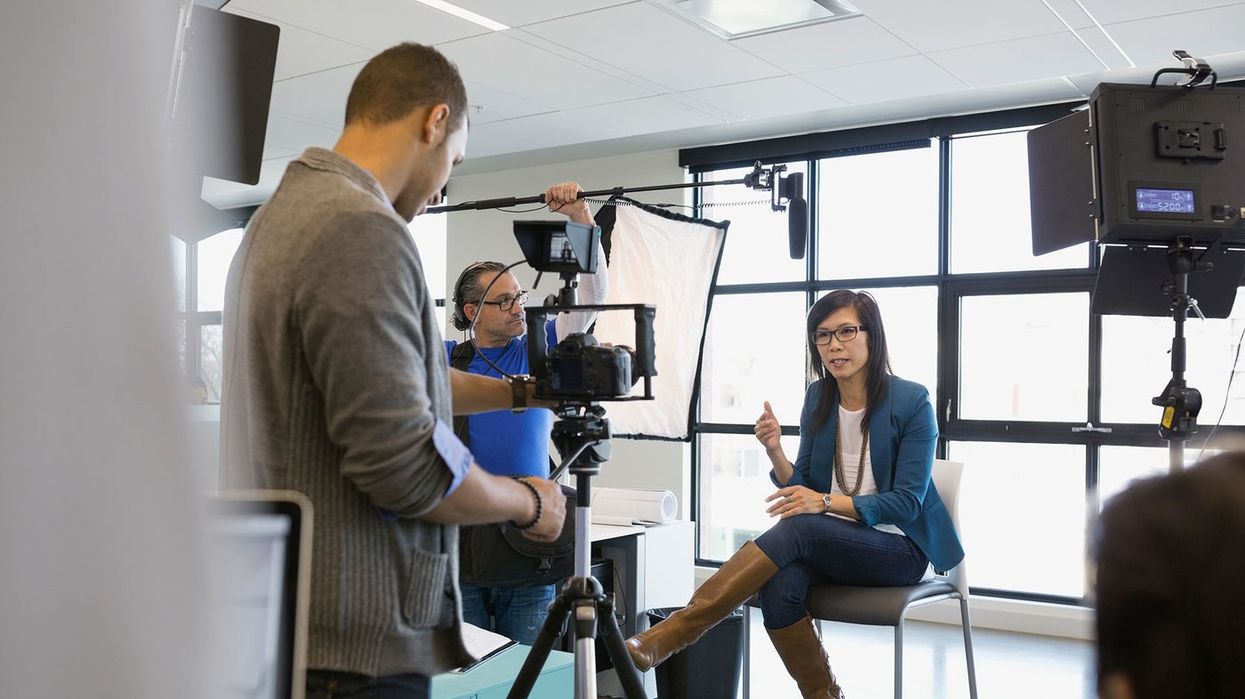Six Common Mistakes to Avoid Before Hitting "Record"
The best lessons in filmmaking are the ones we learn from our mistakes.

When learning how to become a better filmmaker, you are bound to make a few mistakes along the way. Sometimes, mistakes are inevitable, while others can be avoided if someone just tells you ahead of time.
Luckily, there are a few common mistakes that almost every filmmaker has made that we can warn you about. From not scouting a location to not thinking about hair, makeup, and wardrobe, here are six common mistakes that you should avoid before pushing the record button.
Think about the location
You should always try to scout the location you will be filming in before the day of the shoot. Try to visit the location at the same time of day that you will be filming to find the best angles and lighting.
If you are unable to visit the location, ask the client to send you as many photos as possible of the site to get an idea of how you will set up your gear.
In the worst-case scenario, you won’t be able to see the location until the day of the shoot. That is perfectly okay. When you arrive at the set, keep all of the equipment in the car and check out the new location. Give yourself time to think about each shot, and visit other spaces if there are multiple locations to shoot available. Once you’ve scouted the location, bring in your gear and start to set up. Always have a plan before you start production because it is hard to stop it once it has started.
Hair, makeup, and wardrobe
Hair, makeup, and wardrobe are just as important as any other aspect in filmmaking. Before the shoot day, email the client/s to tell them to bring multiple options for wardrobe. In the email, create a list of what clothing they should avoid like whites, logos, and distracting patterns, and send sample photos of what you are expecting from your client’s wardrobe choices.
The last thing you want is a client to wear a green shirt and the background of the location is a similar green. Having options will allow you the freedom to find what is flattering from them and the setting.
If your budget is tight and you can’t have a makeup artist on set, then bring with you face powder, hairspray, a lint roller, and a comb—the bare necessities. A little bit of powder will reduce the shininess of the client on camera, making the process of filming easier on you in the long run. Having a photo and expectation of how the client will look will give you time to think about how you will light the client in the scene without having to spend time figuring it out when they are there.
Sound
Any space you are filming in could have potential road bumps when it comes to sound. During your location scout, clap in the room to hear how much echo there is. Can you find a space with less echo, or do you have to bring in extra gear to quiet the set? Here are some tips to help you avoid common audio pitfalls.
Next, get quiet and listen for any other sounds like air conditioners, people talking, traffic, and more. See if you can turn those sounds off or find a way to work around the obstacle.

Set expectations for the client
You wouldn’t be able to start a project without a client, so think about their time before the day of filming.
There is a chance that filming could take two hours when the client thought it would only take 30 minutes. Let the client know how long filming will take so everyone is on the same page. Keeping everyone on the same page will make the entire process run smoothly for both you and the client.
Consistent Lighting
Natural light is hard to control. If you are only filming for a few minutes, then having consistent lighting may not be a problem for you. But if you are filming for a long time, have a lighting plan of attack.
Location scouting will help you determine how the lighting will be around the time of your shot. Knowing how the natural light will allow you to decide if filming near a window will work or if a key light needs to be placed outside the window. Plan for cloudy days or inconsistent lighting to save you time in the editing room.
Think about the big picture
Beautiful shots are wonderful to look at and show off your skills as a filmmaker, but keep in mind why you are there filming.
Try to think of these three things when you are on set: what am I filming, what was the shot before this, and what shot is next?
This will help you create and think about a big picture instead of getting caught up in the little details. You can take it a step further and think about how well shots will edit together rather than exist as individual shots.

No one is perfect, and filmmaking is a skill that will improve with experience. Don’t be afraid to make mistakes, but own up to them. You have to hold yourself accountable and learn from the mistakes that happen on set. Knowing what to avoid the next time will make you a better, well-rounded filmmaker.
Remember to scout a location, consider hair, makeup, and wardrobe, the sound, and lighting of the location, and establish an expectation for you and the client. These common mistakes are avoidable and will allow you to focus on other areas of improvement.
Are there any other common filmmaking mistakes you can think of? Let us know what they are in the comments below!
Source: Epic Light Media











